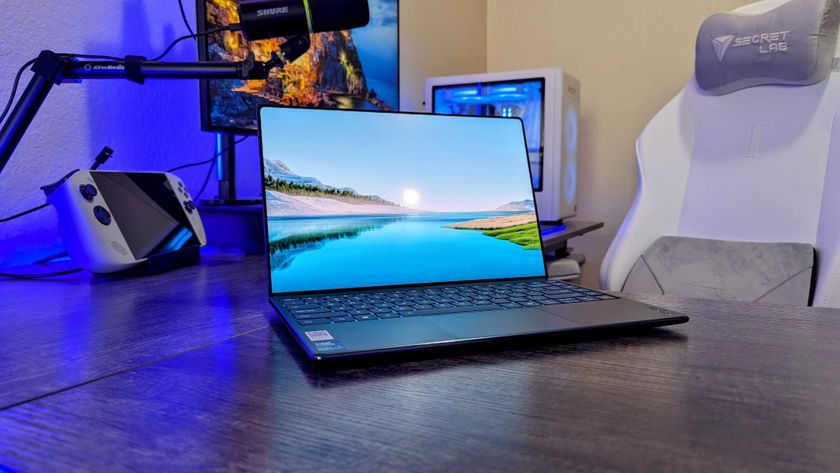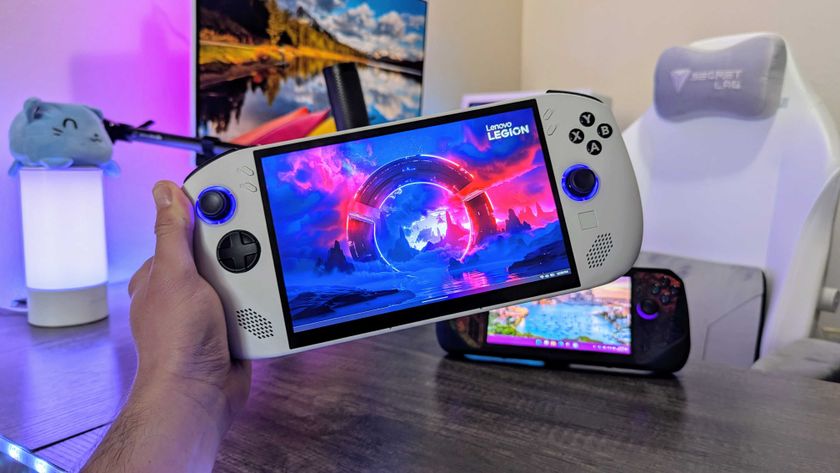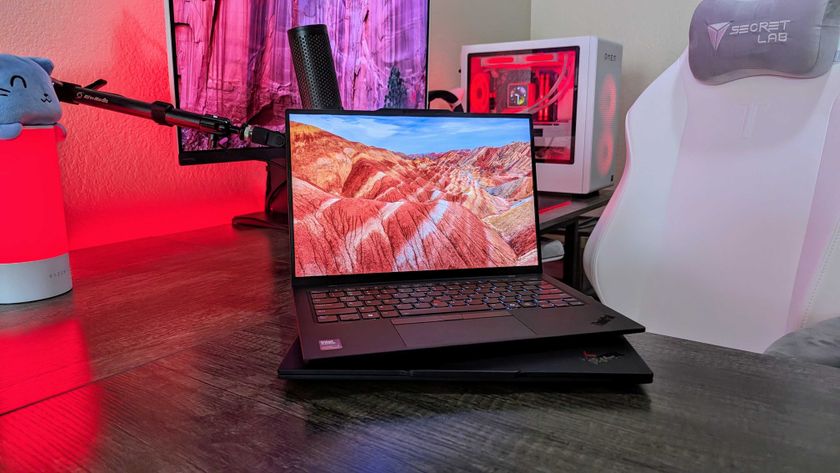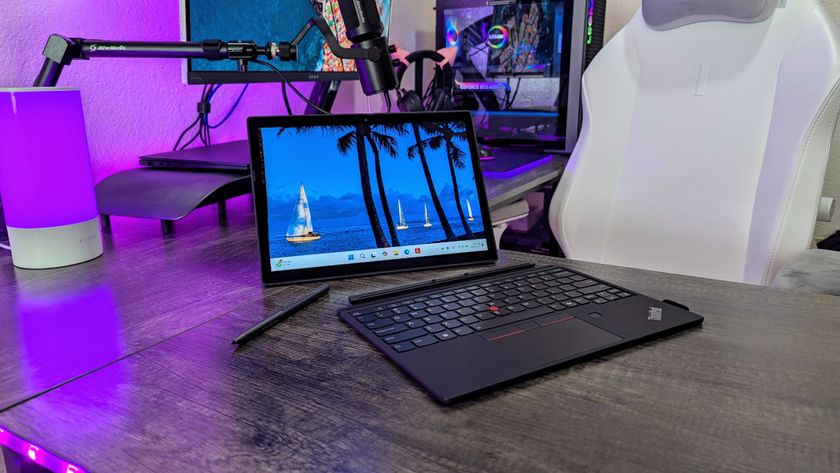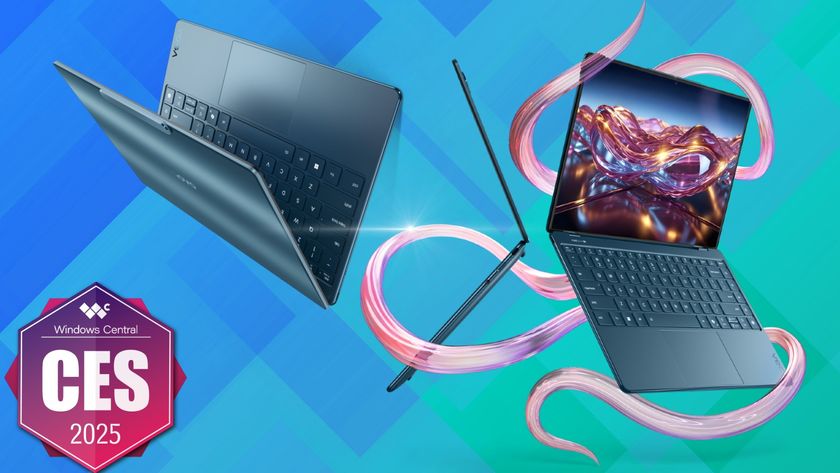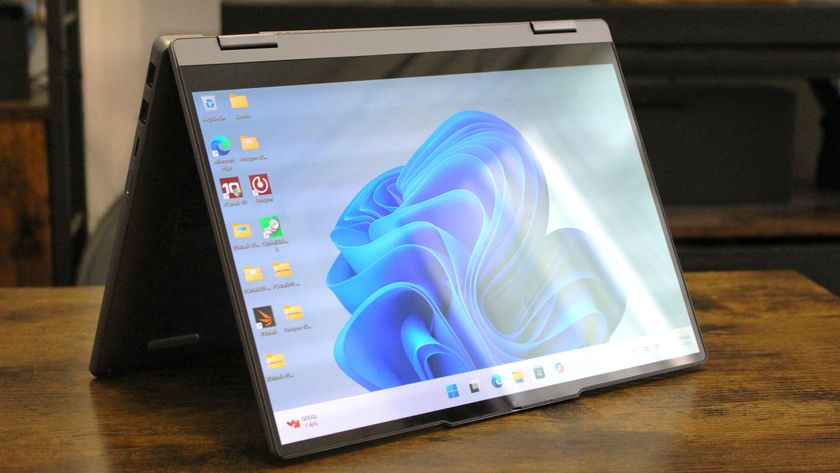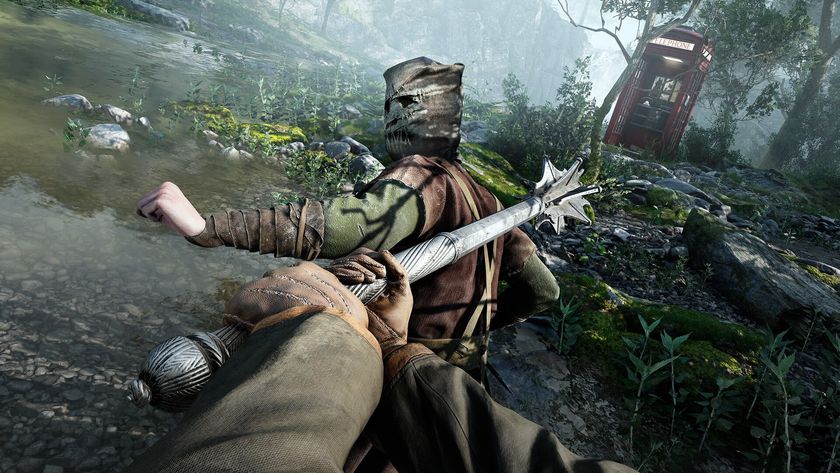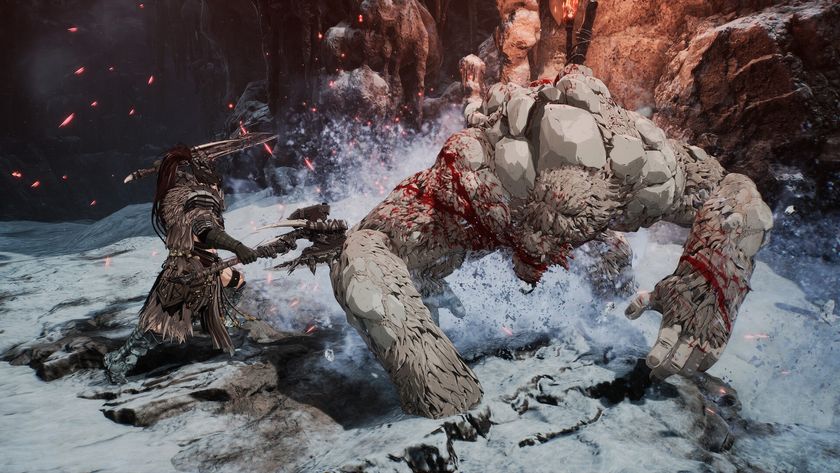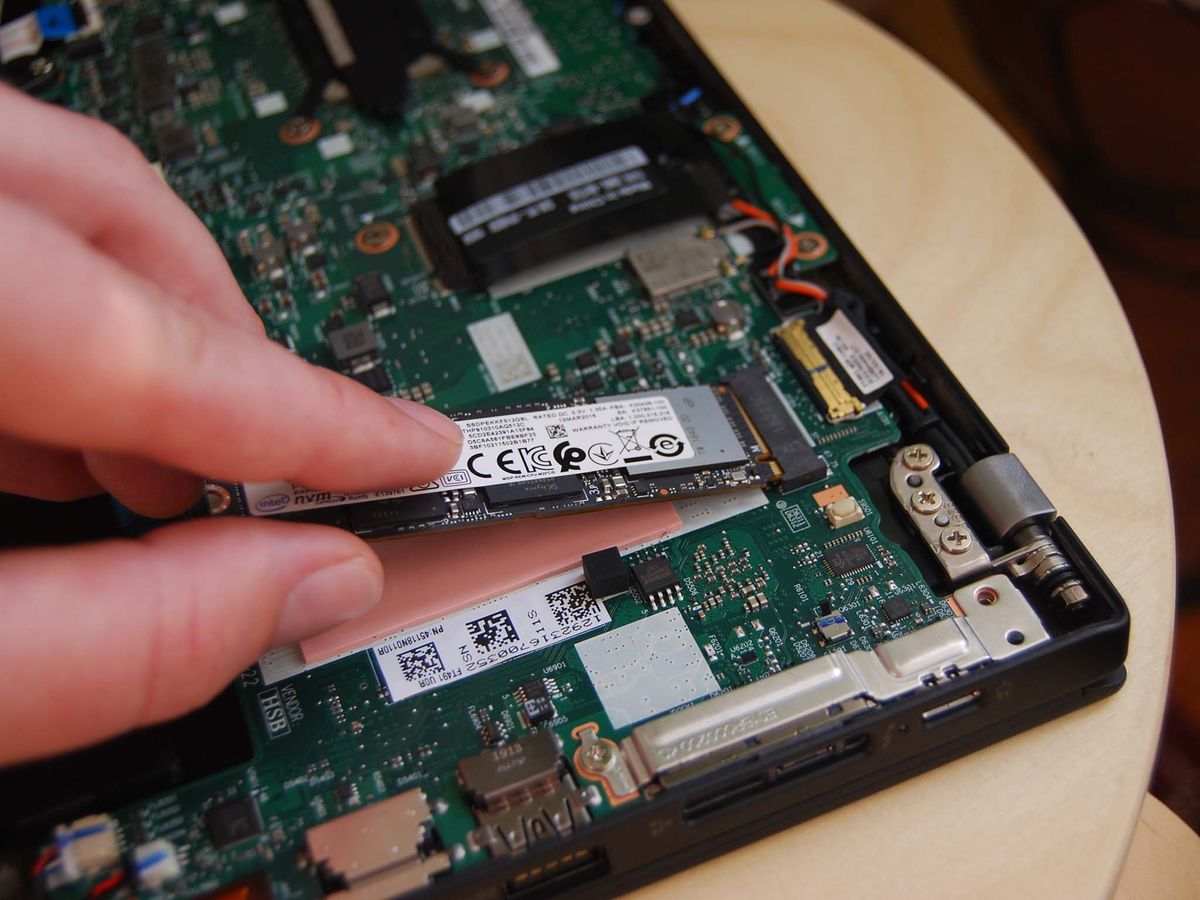
The ThinkPad T490s is a slimmer and lighter version of the T490, and though the RAM is soldered to the board, there is an M.2 PCIe NVMe solid-state drive (SSD) that can be upgraded after purchase. Whether you saved some money at checkout by going with a smaller drive or you want as much speed as possible, here's the hardware you need and how to perform the upgrade.
Hardware and software to get the job done
- M.2 PCIe NVMe SSD: Samsung 970 EVO Plus (From $70 at Amazon)
- SSD enclosure for cloning: ElecGear M.2 PCIe enclosure ($45 at Amazon)
- Cloning tool: Macrium Reflect 7 (Free at Macrium)
- Prevent damage: Rosewill anti-static wristband ($10 at Amazon)
- All required tools: ORIA PC toolkit ($33 at Amazon)
- Slim business laptop: Lenovo ThinkPad T490s (From $1,232 at Lenovo)
How to upgrade the SSD in your Lenovo ThinkPad T490s
Note: Before beginning any upgrades on a PC, it's a good idea to backup your data in the unlikely event something should go wrong. You'll also want to ensure you're not working in a static-filled environment, as it can cause damage to a PC's internal hardware. Consider investing in an anti-static wristband to avoid unnecessary damage.
You can choose from quite a few different T490s configurations available from Lenovo, starting with a model that includes a 128GB M.2 SSD and up to a 1TB M.2 SSD. The latter has a lot of space for your documents, but it's costly to buy from the factory and it might not match the speed of our recommended upgrade — the Samsung 970 EVO Plus — depending on what type of hardware Lenovo has at the time it puts together your T490s.
Because there's just room for the one SSD, you might want to clone the old drive over to the new one before installing it in the laptop. This can be made easy with an external M.2 SSD enclosure that connects to your T490s via USB-C, as well as cloning software. We've had success with Macrium Reflect 7, and we've put together a guide to help you through the entire process.
Alternatively, if your drive is mostly empty and you don't have anything you want to move to the new drive other than Windows 10, you can do a fresh install of the OS after you replace the SSD. There are some steps to take of before you do any work with the hardware, including creating bootable media, so be sure to have a look at our guide to a clean install before proceeding.
Once you've performed any necessary data backups and have decided whether to clone or start fresh, clear out a well-lit workspace, power down your T490s, and proceed with the steps below.
- Unscrew the five black fasteners on the bottom panel using a Phillips-head screwdriver. Note that they will not back out all the way to prevent loss.
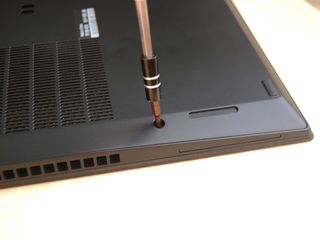
- Pry up the bottom panel using a pry tool. Start at one corner and work your way around the laptop.
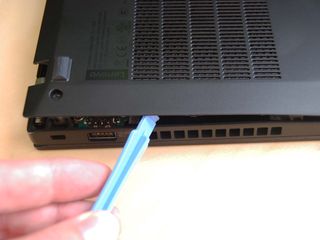
- Unscrew the single silver fastener at the end of the M.2 SSD.
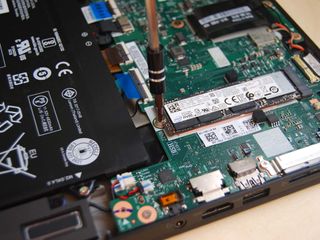
- Pull the M.2 SSD carefully away from the slot. It should come away without much friction. If the silicone insulating strip comes up with the SSD, peel it off and replace it on the motherboard to await the new SSD.
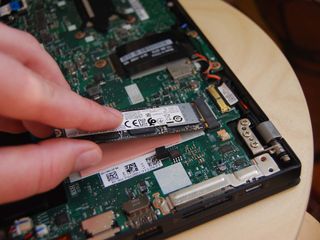
- Insert the new M.2 SSD into the slot. Keep it relatively flat. Notice it is keyed and will only fit one way.
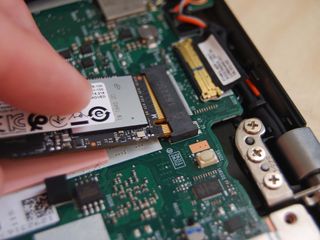
- Screw in the single silver fastener at the end of the M.2 SSD. Do not overtighten.
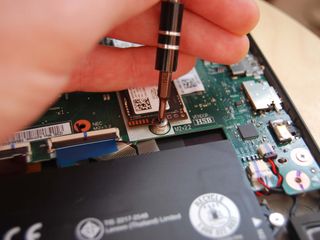
- Replace the bottom panel of the laptop by applying even pressure around the edges. Note that there are three teeth along the front edge that must be in place for the panel to sit properly.
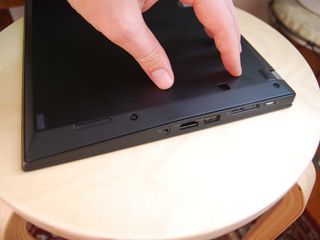
- Screw in the five black fasteners on the bottom panel.
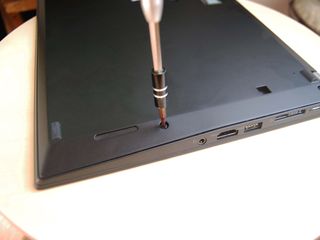
You can now boot your ThinkPad T490s to see if the upgrade went according to plan. If you chose to perform a fresh install of Windows 10 on the new SSD, now is the time to do so.
Get the Windows Central Newsletter
All the latest news, reviews, and guides for Windows and Xbox diehards.
Our top hardware and software picks
Our pick for an upgrade M.2 PCIe NVMe SSD is Samsung's 970 EVO Plus. It's incredibly fast, it's long-lasting, and it's relatively cheap for the performance you're getting.

Unreal performance up to 1TB in size
Samsung's 970 EVO Plus brings blistering read and write speeds, a competitive price, and a five-year warranty, which altogether is an impressive package. Sizes start at 250GB and go up to 1TB.
If you're a fan of the T-series ThinkPads and need a powerful 14-inch business partner that remains quite portable, the T490s should be a great fit. It offers quite a few ports, the keyboard and touchpad are superb, and the low-power display option sucks up minimal battery and still offers excellent color and contrast.
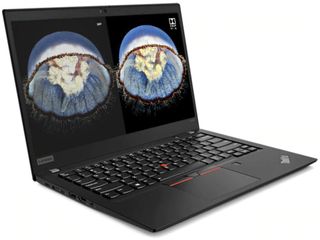
A 14-inch Ultrabook with impressive features
The T490s makes a great portable pick for lovers of the T-series ThinkPads, though it lacks some features found in the T490. Still, you'll find all-day battery life, powerful hardware options, a comfortable keyboard, and a knockout display.
Additional Equipment
To make the upgrade process easier and less risky, consider investing in some of these affordable PC tools, and don't forget about Macrium Reflect and an external enclosure for those who want to clone drives.
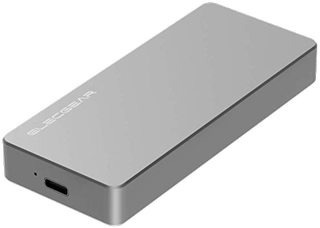
ElecGear M.2 PCIe enclosure ($45 at Amazon)
If you're cloning the original SSD to the new SSD, an external enclosure is needed. This option from ElecGear fits M.2 PCIe NVMe SSDs and can connect back to your ThinkPad T490s with USB-C or USB-A.
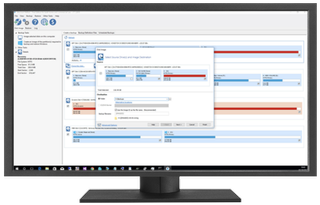
Macrium Reflect 7 (Free at Macrium)
We've had success cloning drives with Macrium Reflect 7, and have even written a complete guide on how to use it properly. A free edition is available, but you can purchase a full edition with a bunch more features for those who truly take backups seriously.
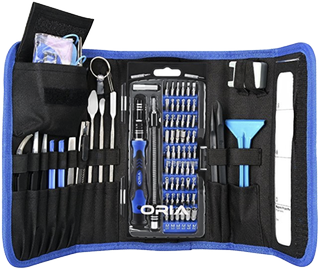
ORIA PC toolkit ($33 at Amazon)
Having the proper gear to work on your PC will always make the job much easier. Here you get a plethora of tools contained in a portable case.
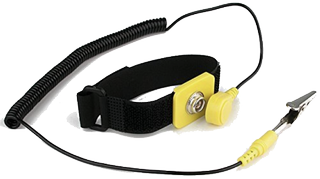
Rosewill anti-static wristband ($10 at Amazon)
Static electricity can damage sensitive PC parts, so remove the risk with an anti-static wristband. Fasten it around your wrist and clip it onto your PC for peace of mind.

Cale Hunt brings to Windows Central more than eight years of experience writing about laptops, PCs, accessories, games, and beyond. If it runs Windows or in some way complements the hardware, there’s a good chance he knows about it, has written about it, or is already busy testing it.
